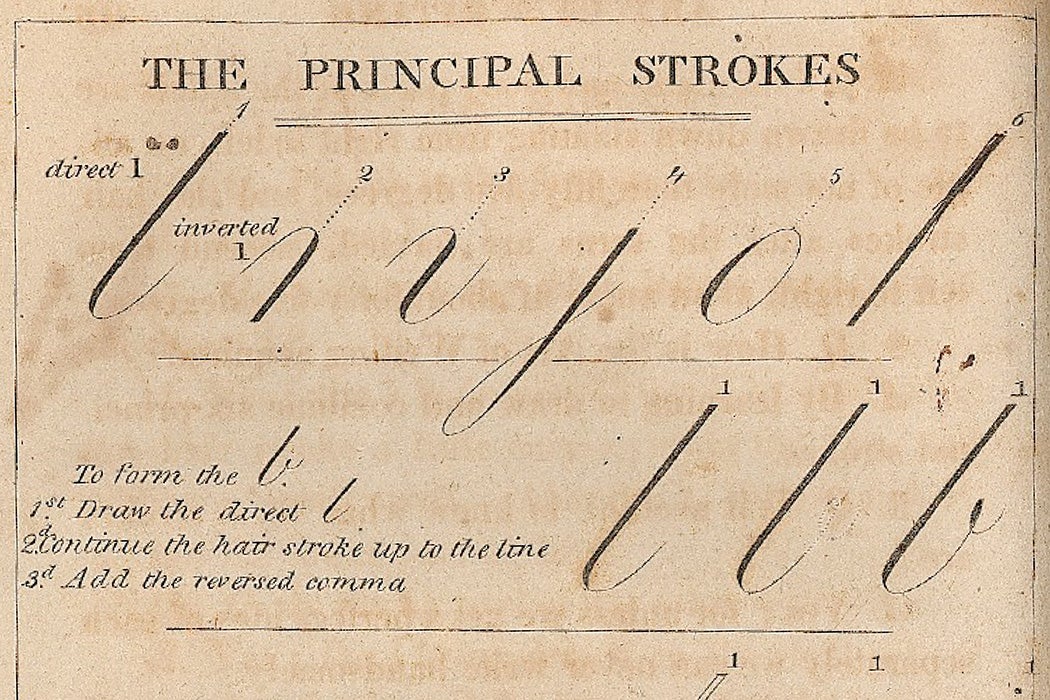In the years following American independence, many questions would be asked, in different spheres, of what it meant to be a citizen, and what it meant to be an American. New England schoolmaster John Jenkins focused on penmanship as the key to building a strong American middle class, creating his own book of instruction for handwriting.
“Writing in the shadow of the American Revolution, Jenkins recognized that subtle changes in everyday cultural practices like handwriting could have significant effects on the character of the new nation,” explains historian Richard S. Christen.
Literacy on both sides of the Atlantic had increased during the sixteenth and seventeenth centuries, but a fine hand tended to be the mark of the well born and well educated. There were fine gradations of writing that marked the author’s background, writes Christen. Jenkins’s goal for the American student was to “democratize fine penmanship, bringing beauty and a traditional signifier of gentility and respectability within reach of many more Americans, especially the nascent middle class.”
The United States also saw a collapse of the distinctions indicated by penmanship styles in terms of social rank in Europe.
“Nearly every late eighteenth-century colonial writer—shopkeeper as well as aristocrat, man as well as woman—used some form of roundhand, a relatively simple script that merged elements of both running secretary and italic,” writes Christen. When one’s first impression of a stranger might be formed by a handwritten note, and friendships maintained by correspondence, cultivating a good style was important.
Given a shortage in the early republic of skilled penmanship masters—who tutored the art of handwriting—copybooks demonstrating correct style proliferated, both for use in schools and for private study. But many schoolteachers themselves had poor hands. It was to address this issue that Jenkins created his own method. He broke letters down into basic strokes, arguing that by learning letters as an assembly of strokes, students could acquire a neat hand more easily.
This is the model that continued to be used by cursive lessons well into the twentieth century.
Weekly Newsletter
“For Jenkins, well-fashioned writing and other skilled handwork were dignified intellectual activities,” Christen writes, “and the capable craftsman—whether represented by the ingenious mechanic or dutiful clerk—was an archetype for the early nineteenth century.”
This was in good time for the industrializing economy, as the expansion of white collar roles meant more people needed efficient and readable handwriting. Jenkins was setting the model for both an instructional method (breaking down the skill into smaller units) and a world of increasingly text-based communication.







